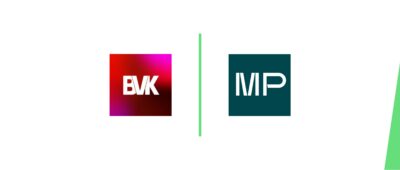
Getting Your Sell-Side Deal Done – Indicative Bids
Part 3: Indicative Bids
In this the third part of our series on “Getting Your Sell-Side Deal Done” we will continue the process where we left off at the end of parts 1 & part 2. Our preparation and documentation are complete, we’ve approached potential investors, had them sign an NDA and are now in the part of the process where Indicative Bids will begin to arrive from those interested in making an offer.
The Significance of the Management Presentation
So, the investor approach is complete. After long hours finalizing the last-minute comments on the IM you are finally done and have sent the Information Memorandum to potential investors and you now have about four weeks until the deadline for indicative bids. Time for some relaxation, right? Well, think again! Now you have (spare) time to actually prepare the Management Presentation, where the management will present the company and themselves to potential suitors. This presentation marks a crucial step in the complete process, as the quality of the management and how they can represent the target and business plan, as well as potential upside potential, will have a significant impact on the valuation, good or bad. In contrast to the IM the Management Presentation focuses more on the details of business drivers and future potentials than on the general info provided previously. In order to get management ready, you will also have a lot of meetings with them not only finalizing the presentation but also training them to deliver the key messages (as in most cases they were not completely involved in the creation of the presentation). Proper training includes several dry runs, where your team will challenge management to prepare them for the real investors. As the Management Presentation basically marks the step from Indicative Bid to Due Diligence of the sell side process you will nevertheless make sure that enough satisfying Indicative Bids lands on the table first.
Structured Q&A Processes
As you have delivered a perfect Information Memorandum, you are convinced that the potential investors now know everything there is to know about the company to hand in an Indicative Bid. As it happens there unfortunately is no such thing as investors without questions, which is perfectly fine, as you would have questions being in their shoes with an outside view probably as well. To clear the most important questions your team will set-up a structured Q&A process where the most important points will be clarified on a more general level by your team during calls. In preparation for these calls you will usually get a list of questions and are tasked with pre-drafting the answers, as well as consolidating the questions of the different parties before sending them to your clients, as obviously your client does not have unlimited time while running a business.
Proactive Communication Ahead of the Deadline
Once the Q&As have been conducted and the deadline is approaching, to get a feeling on how many Indicative Bids you will collect and where they will end up in terms of valuation, you should proactively get in contact with the interested parties and remind them on the upcoming deadline. If they need further assistance you might as well give comfort to them, as long as it is nothing too extravagant. At the end of the day they are just one of many and you are not getting paid to do their work.
The Day of Indicative Bids
The day has arrived, Thursday 5pm, deadline for indicative bids! It’s the first step in the process where you will see if all the hard work has paid off. Two dozen IMs sent out, 20 Q&As conducted and you are left with … five Indicative Bids. Not that much you think and are somehow disappointed, but you don’t have to be. As usual, a high percentage of bids comes in late, this can be the next day or sometimes even a week later. As you anticipated that you will not get all Indicative Bids in time you intentionally set the deadline to a Thursday while having the client meeting to evaluate the bids on Monday. This also gives you enough time on Friday to properly compare the bids received . As you outlined how the Indicative Bids should be structured in the Process Letter sent to investors with the IM you might assume that the comparison is just easily typing figures into an excel sheet, but that is not accurate, as some of your EBITDA adjustments might be accepted others not, some parties deduct items others do not deduct, that’s why every bid comparison is different. Once you have found a suitable way to compare the bids you meet with your client and decide based on the valuation and other non-valuation topics which parties to take to the next round being the Due Diligence. If you have a very close range of bids this might not be easy, so it can make sense to include an additional loop, where you grant potential investors the (previously extensively trained) Management Presentation and collect revised bids afterwards again to level the field.
After final selection you grant the parties access to the next phase. Before really digging into the Due Diligence and spending a lot of money on advisors, the selected parties however usually want to see the plants and meet the management, which is why now you grant them the Management Presentation (if not provided beforehand), ideally at the company’s site or with a combined site visit. Afterwards the real Due Diligence work starts.
The latest information about MP
Ready to start?!
Our teams of specialised dealmakers and ambitious M&A
challengers, are ready to take on your challenge – and exceed your expectations, every day.
- Market leader in industrial M&A
- 700+ industrial M&A projects
- 75+ professionals form the largest industrial M&A team
- Adding credibility to your deal
- Maximising your value with our challenger mindset


